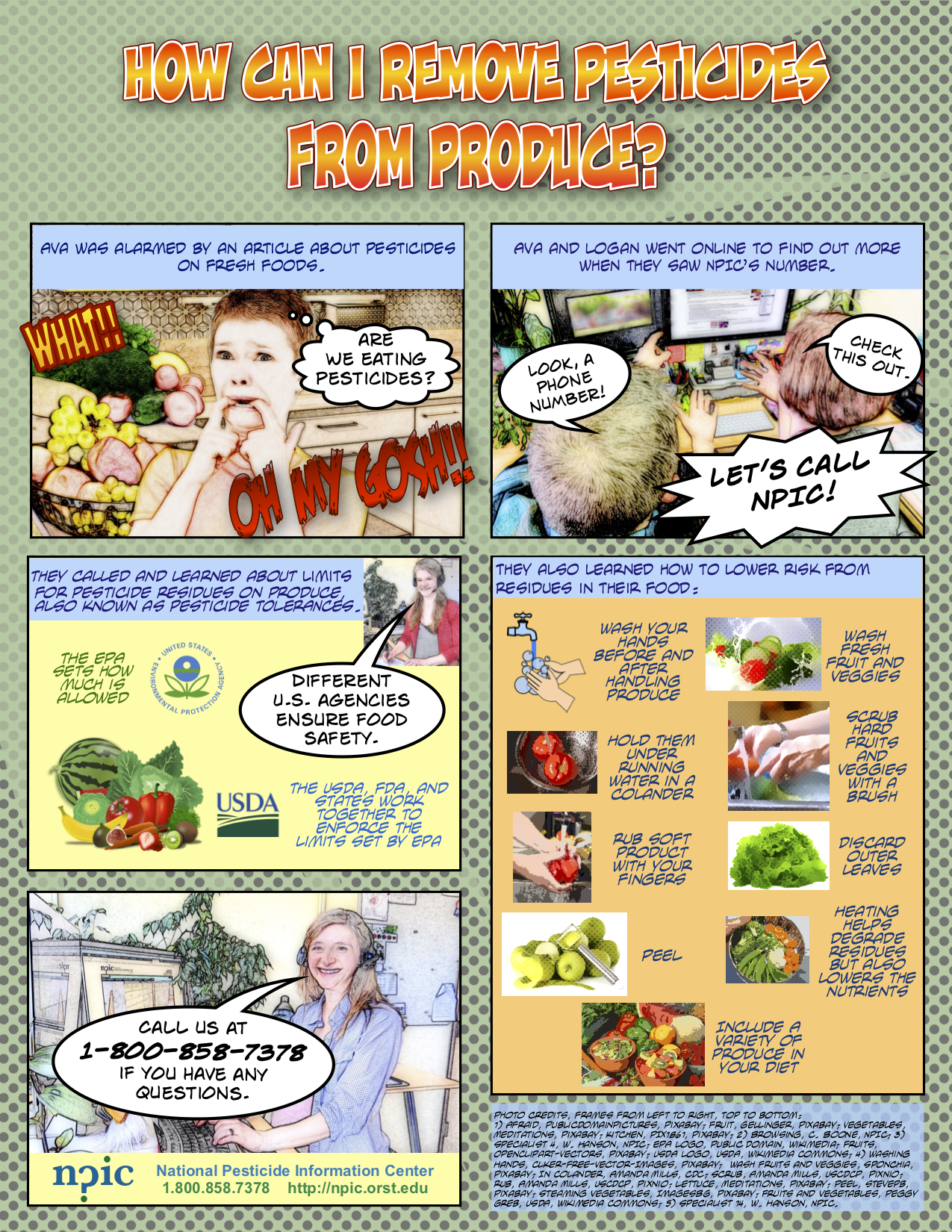How can I wash pesticides from fruit and veggies?
1.800.858.7378npic@oregonstate.edu
We're open from 8:00AM to 12:00PM Pacific Time, Mon-Fri
A to Z


No method is 100% effective. As a rule of thumb, washing with water reduces dirt, germs, and pesticide residues remaining on fresh fruit and vegetable surfaces. Washing and rubbing produce under running water is better than dunking it. Wash fruits and vegetables from the farmers' market, your home garden, and the grocery store.

Produce may have dirt, germs, and pesticide residues on them during the time it is grown until it's taken to your table. The Food and Drug Administration (FDA), US Department of Agriculture (USDA), and Environmental Protection Agency (EPA) control the amount of pesticide residue allowed on foods to ensure food safety. Any pesticide residue on fruits and veggies must comply with the regulations. The residue limits set by EPA are known as tolerances. EPA works to ensure a 'reasonable certainty of no harm' to infants, children, and adults from eating small amounts of pesticides in food.
According to the FDA, eating a variety of fruits and vegetables is important for a healthy diet. All of the following options can reduce the risk of pesticide exposure.
Did You Know:
Fruits and vegetables have pores like your skin does. Soap products can get trapped in the pores. There are some kinds of soaps designed to be used on produce, but they are no more effective than water alone.
- Wash fruits and vegetables even if you do not plan to eat the skin.
- Wash your hands with soap and warm water before and after handling fresh fruits and vegetables.
- Hold the fruit or vegetable under flowing water in a strainer. This removes more pesticide than dunking the produce.
- The FDA does not recommend washing fruits and vegetables with soap, detergent, or commercial produce wash. They have not been proven to be any more effective than water alone.
- Scrub firm produce like melons and potatoes with a clean brush. Scrubbing firm fruits can help get more of the residues off.
- Rub soft produce like grapes while holding them under running water to remove residues.
- Put fragile fruits and vegetables like berries in a colander and turn it while gently spraying it with water.
- Discard the outer leaves of leafy produce, like lettuce and cabbage.
- Peel produce that can be peeled, like peaches or apples.
- Heating can help get rid of residues, but you might be getting rid of nutrients, too.
- There is no method of washing produce that is 100% effective for removing all pesticide residues.

How can I remove pesticides from fruits and vegetables?
 |
How can I wash pesticides from fruit and veggies? Episode 2 - A specialist discusses how to best wash pesticide residues from produce, including potential risks of using household products to clean fruit and vegetables. Download and Listen, View Transcript - 1:41 min., 1.54MB |

If you have questions about this, or any pesticide-related topic, please call NPIC at 1-800-858-7378 (8:00am - 12:00pm PST), or email us at npic@ace.orst.edu.

